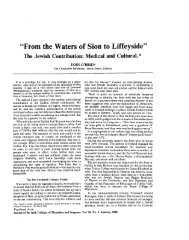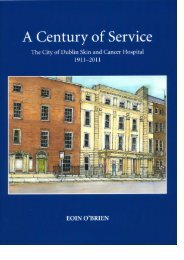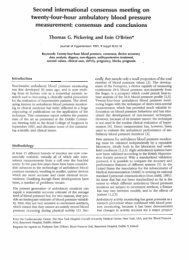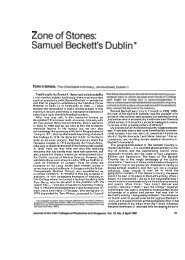Nevill Johnson: Paint the smell of grass - Eoin O'Brien
Nevill Johnson: Paint the smell of grass - Eoin O'Brien
Nevill Johnson: Paint the smell of grass - Eoin O'Brien
You also want an ePaper? Increase the reach of your titles
YUMPU automatically turns print PDFs into web optimized ePapers that Google loves.
When my son Rory went to London as a student in 1996 he and <strong>Nevill</strong> became close in a way<br />
that I never had. He writes <strong>of</strong> this time toge<strong>the</strong>r. “I was very fortunate to get to know my<br />
grandfa<strong>the</strong>r <strong>Nevill</strong> when, as a ra<strong>the</strong>r overawed and shy 17 year-old, I moved to London to start<br />
university. We quickly became warm friends and, over many lunches in his favourite Churchill<br />
Arms pub in Notting Hill Gate, we discovered a wide range <strong>of</strong> shared interests – science, religion,<br />
books, poker, Beavis & But<strong>the</strong>ad (at that time, his favourite television programme), our friends,<br />
a dislike <strong>of</strong> authority. The <strong>Nevill</strong> <strong>Johnson</strong> I came to know was great company: generous, selfeffacing,<br />
inquisitive and quick to humour. Very occasionally I was <strong>the</strong> subject <strong>of</strong> a cruel put-down<br />
over some minor comment or o<strong>the</strong>r, which I always felt reflected <strong>the</strong> almost impossibly high<br />
standards he held himself to. Although he would probably recoil at <strong>the</strong> suggestion, <strong>the</strong> stories and<br />
reflections <strong>Nevill</strong> shared with me left a pr<strong>of</strong>ound and lasting impression: his rejection <strong>of</strong> <strong>the</strong> family<br />
firm as a young man, symbolised by his throwing a newly-tailored bowler hat under <strong>the</strong> wheels <strong>of</strong><br />
a bus; his long-anticipated trip (by motorcycle and sidecar) to a big Picasso exhibition, only to<br />
turn back for home on <strong>the</strong> steps <strong>of</strong> <strong>the</strong> museum; <strong>the</strong> happy period during which he cultivated a<br />
wild and secluded farm in Wilby. In his constant tension with himself, and with society around<br />
him, <strong>Nevill</strong> helped me to understand that <strong>the</strong> value <strong>of</strong> ideas and relationships far outweighs <strong>the</strong><br />
empty titles conferred by institutions, and that our life goals need not be those defined by<br />
convention.”<br />
The authors <strong>Eoin</strong> O’Brien and Dickon Hall both knew <strong>Nevill</strong>, first through his painting and<br />
<strong>the</strong>n in later years by seeking him out where he lived in Notting Hill Gate in London. They<br />
collaborated on this book using archival material and his works which include not only painting<br />
but also lithography, photography, film, writing and a journal from 1964. The result is a picture<br />
<strong>of</strong> a pr<strong>of</strong>ound and committed painter who was also an intelligent articulate observer. The authors<br />
have done well indeed to present such a complex subject in a remarkably clear and accessible<br />
manner.<br />
In <strong>the</strong> first part <strong>of</strong> <strong>the</strong> book Dickon Hall looks at <strong>the</strong> painting: how it developed from its early<br />
beginnings in Belfast in <strong>the</strong> 1940s and how <strong>the</strong> <strong>the</strong>mes relate to <strong>the</strong> post-war context. He follows<br />
<strong>the</strong> trace <strong>of</strong> <strong>the</strong> painter to Dublin and Victor Waddington, and <strong>the</strong>n as he returned to England<br />
and London where he died in 1999. Throughout <strong>the</strong> narrative Hall shows a depth <strong>of</strong><br />
understanding <strong>of</strong> <strong>the</strong> painting and writes about it in very intelligible manner. He brings out <strong>the</strong><br />
relationship between <strong>the</strong> person and <strong>the</strong> painter – how <strong>Nevill</strong> was driven, indeed possessed, by a<br />
need to paint and how he dealt with that compulsion, indomitable and undeniable.<br />
In <strong>the</strong> second part, <strong>Eoin</strong> O’Brien draws widely on <strong>Nevill</strong>’s writing, part autobiography part<br />
poetic, to present a broader portrait <strong>of</strong> <strong>the</strong> man. This was not an easy task despite ample material.<br />
The writing in <strong>the</strong>se works is articulate; it is perceptive and intelligent, indeed intellectual. But<br />
perhaps by its very polish it somehow manages to maintain a distance between <strong>the</strong> reader and <strong>the</strong><br />
8 <strong>Nevill</strong> <strong>Johnson</strong> l <strong>Paint</strong> <strong>the</strong> Smell <strong>of</strong> Grass<br />
author. O’Brien has worked round this by correlating passages to complement his personal<br />
understanding <strong>of</strong> <strong>the</strong> man. The result is a striking portrait <strong>of</strong> <strong>the</strong> life-long struggle <strong>of</strong> a man with<br />
his creative force, something that is his own, yet also in some ways a strange beast that inhabits<br />
him allowing him little respite to pursue <strong>the</strong> ordinary life most <strong>of</strong> us content ourselves with.<br />
The portrait <strong>the</strong>y develop, despite <strong>the</strong> difficulty <strong>of</strong> <strong>the</strong> subject, is close to my own<br />
understanding <strong>of</strong> him and, I feel, does justice to his creation and his life. I hope that <strong>Paint</strong> <strong>the</strong><br />
Smell <strong>of</strong> Grass will lead to a better appreciation <strong>of</strong> <strong>Nevill</strong> and his contribution to modern art in<br />
Ireland.<br />
I was struck by something Chris Agee wrote about Seamus Heaney because it expresses so<br />
well <strong>the</strong> way I see <strong>Nevill</strong> and his painting: he says <strong>of</strong> Heaney 1 “There is a strong sense, too, that<br />
each poem is one uniquely fitted piece <strong>of</strong> <strong>the</strong> jigsaw from a radiantly inward geography that he appears<br />
able to mine inexhaustibly. The surpassing coherence and extent <strong>of</strong> this psychic excavation, especially<br />
as it relates to interlocking patterns <strong>of</strong> imagery and tonality across his whole oeuvre, is ano<strong>the</strong>r <strong>of</strong> <strong>the</strong><br />
things that sets him apart quite dramatically.”<br />
1 ‘Heaney’s Blackbird’ Chris Agee, Irish Pages, 2005.<br />
Galway, <strong>Nevill</strong>, Rory and Jessica <strong>Johnson</strong><br />
Galway <strong>Johnson</strong><br />
Kerry, May 2008<br />
Foreword l Galway <strong>Johnson</strong> 9









